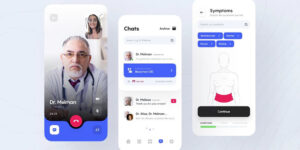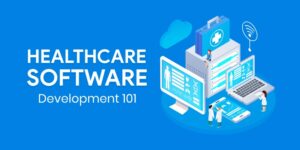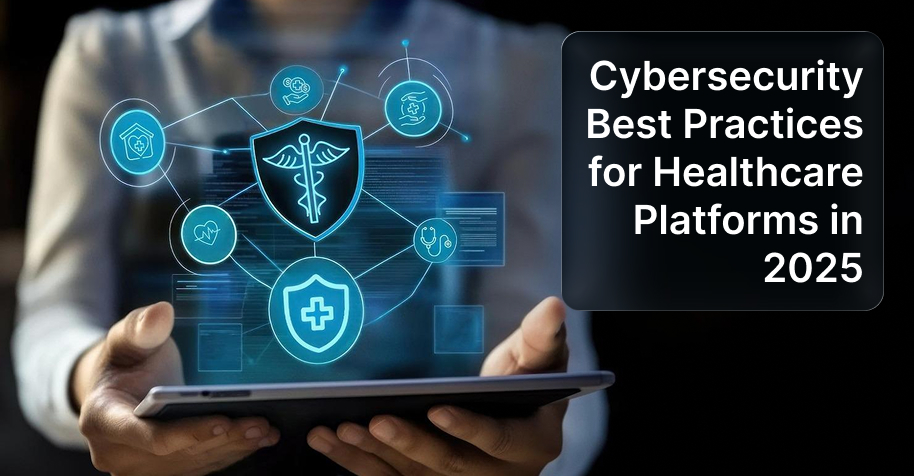
The healthcare sector is becoming digitalised, but this comes at the cost of increased cyber threats. The blog discusses the best cybersecurity practices intended to secure healthcare platforms in 2025 that organisations can use to safeguard patient data, maintain compliance, and build a trust relationship in an increasingly interconnected world.
Healthcare has always been personal. It deals with the most personal data of individuals, like their health, past and future. However, with the shift to online hospitals and clinics, the very systems that help in saving lives are now the main targets of cybercriminals.
Every click, record, and digital signature holds sensitive information. Technology has revolutionised healthcare delivery, from patient portals to AI diagnostic tools. But it has also given hackers new doors. One data breach has the potential to ruin thousands of lives, millions of dollars, and years of hard work to gain trust.
Cybersecurity is no longer a choice in healthcare in 2025, but a mission. The move towards digital, telemedicine, wearables, and AI-based systems requires more robust defences than ever. Security should be innovative.
In this blog, we’ll explore the best cybersecurity practices every healthcare platform should adopt in 2025, from data encryption and zero-trust architecture to staff training and AI-driven threat detection.
Why Cybersecurity Matters More Than Ever in Healthcare
The stakes in healthcare are different. A breach here isn’t just about stolen credit cards; it’s about stolen identities, blackmail, and even risks to patient safety.
Medical records are some of the most valuable data on the dark web. Why? Because they include everything – names, addresses, social security numbers, and even medical histories. Cybercriminals use this data for insurance fraud, identity theft, and illegal sales.
Beyond the financial damage, breaches can paralyse hospitals. Think about the possibility of systems going dead in the middle of surgery due to ransomware. Cyberattacks do not just involve stealing information in 2025, but can also interfere with life-saving activities.
This point is clear: cybersecurity in healthcare is not only about protecting information but also lives.
1. Adopt a Zero-Trust Security Model
The previous strategy of trusting anyone within the network is no longer effective. Cybercriminals are more intelligent and sometimes already within the system. According to the Zero-Trust model, no one can be trusted both internally and externally.
In this model, all access requests are to be authenticated. Devices, users and applications undergo rigorous authentication procedures before they can be allowed access. The most important are multi-factor authentication (MFA), the control of the devices, and the least-privileged access.
In 2025, healthcare organisations should consider zero-trust as a base, rather than an upgrade. Hospitals can prevent breaches by verifying users and tracking activity in real-time, preventing their expansion.
2. Encrypt Everything: From Data at Rest to Data in Transit

Encryption is one of the most effective security barriers in cybersecurity. This applies to patient files kept in the cloud or to lab results dispatched to a doctor’s tablet, and encrypted data can only be read by authorised users.
In healthcare platforms, a huge amount of information is processed every day. Patient records, billing information, and lab results should be secured. End-to-end encryption (E2EE) must be implemented, not only for storage, but also in transit between devices and networks.
Advanced encryption standards (AES-256 or higher) are used to make the data inaccessible to hackers, even in case they reach the system. In 2025, encryption is not an option; it is a requirement.
3. Strengthen Access Control and Authentication
The majority of cyber cases happen as a result of poor access control. Wildly used passwords, expired user privileges, and the absence of surveillance are usually offenders. Role-based access control (RBAC) should be implemented in every healthcare platform; that is, users must receive access only to what is necessary. Physicians, nurses, and administrators should not share similar permissions.
Another layer of protection is the addition of multi-factor authentication (MFA), such as biometrics or one-time codes. This will thwart unauthorised logins, even in the case of stolen credentials.
Continuous authentication should also be a priority for healthcare leaders in 2025. It is now possible to analyse user behaviour, such as typing speed, device type, or IP location, to identify suspicious activity in real-time
4. Regular Security Audits and Penetration Testing
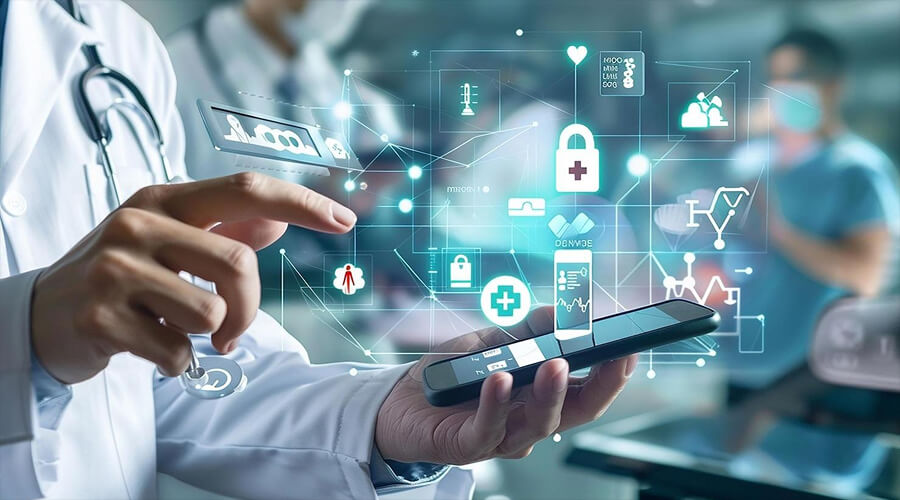
Technology is developing rapidly, and so are cyber threats. What was successful last year may not be effective this year. From time to time, security audits and penetration testing can be used to seek weak points before these are detected by attackers.
Everything should be audited, including network vulnerabilities, software updates, access control, and third-party integrations. External penetration testers imitate attacks to test the strength of your defences.
These tests are not about finding blame; they’re about finding blind spots. Conducting audits regularly, preferably every quarter, can help healthcare organisations remain proactive against attackers and adhere to policies such as the HIPAA and GDPR.
5. Secure APIs and Third-Party Integrations
The use of APIs (Application Programming Interfaces) is critical in modern healthcare infrastructure to exchange data between systems, such as operating patient apps, labs, pharmacies, and insurers. However, each integration presents an additional entry point to hackers.
In 2025, APIs in healthcare should be authenticated by high-quality authentication tokens, encrypted, and tightly controlled by permission policies. All the third-party connections must be tracked, checked, and periodically inspected.
6. Implement Advanced Threat Detection and AI Monitoring
In 2025, cybersecurity is more about prediction than prevention. AI-based tools can identify anomalies in real time- even before human beings do.
Machine learning algorithms examine network patterns, user activity and data traffic to detect possible threats in real time. For example, when an employee account suddenly starts downloading numerous files at 2 AM, AI systems can identify or block it within seconds.
AI surveillance saves a lot of time in response and avoids possible damage. Together with Security Information and Event Management (SIEM) systems, it provides healthcare organisations with a 24/7 security watchtower.
7. Regular Employee Training and Awareness
Human error poses the biggest cybersecurity risk, regardless of the level of technology. Simple passwords, data shared without care, and email phishing can lead to significant breaches.
Training programs should not be an event but a continuous process. The workers should be taught how to identify phishing and use secure devices, as well as report suspicious activity immediately.
In 2025, gamified cybersecurity training is in fashion. The learning process can be made fun and much more effective with the help of quizzes, rewards, and interactive simulations. When employees are aware of how breaches impact the actual world, they act as your front line defence.
8. Backup and Disaster Recovery Planning
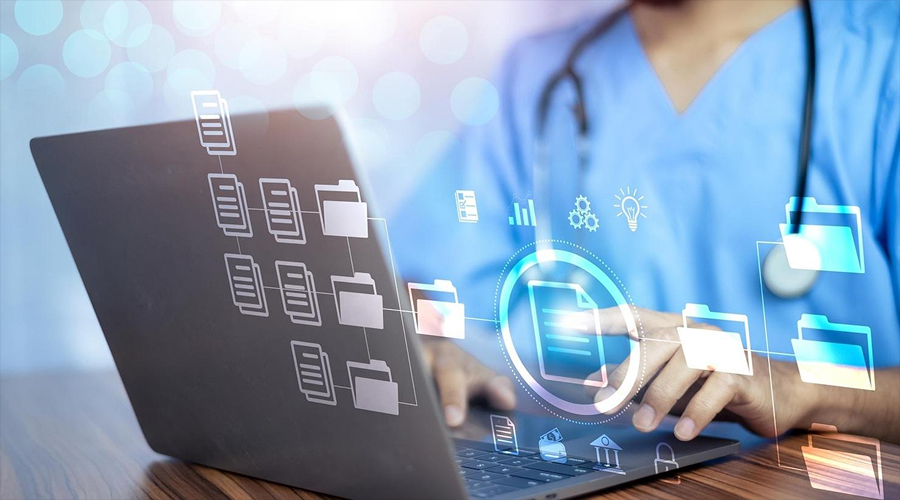
No system is perfect despite the best defences. This is why backups and disaster recovery are important. Anyone can be affected by a ransomware attack, power outage, or server crash.
Periodic backup of patient data to off-site, secure locations is important in ensuring that operations are reinstated on time. Encrypted and automatic cloud backups also minimise downtimes and damage to data.
The disaster recovery plan should include steps on how to restore systems, inform stakeholders and communicate effectively with the patients.
9. Protect Connected Devices (IoMT Security)
Patient care has been transformed by the Internet of Medical Things (IoMT). These devices include smart heart monitors and connected infusion pumps that collect and transmit vital information. But all of them may be a target.
IoMT devices should be secured. It involves the use of device-specific credentials, network segmentation, and automated firmware updates.
Healthcare providers need to collaborate with manufacturers to establish precise security standards. A non-protected device is not only a technological problem, but also a patient safety risk.
10. Compliance with Global Healthcare Regulations
All healthcare platforms are subject to rigid laws and compliance requirements. HIPAA in the U.S., GDPR in Europe, or ISO 27001 are frameworks to secure patient privacy, accountability.
In 2025, compliance is not just on paper. It is about establishing trust via transparency and data ethics. Periodic compliance audits, reviews, and certifications of staff ensure that healthcare platforms are up to international security standards
The Future of Healthcare Cybersecurity
With the growing smartness of healthcare, AI diagnostics, wearables, and remote monitoring, the attack surface will only grow. But so will our ability to defend. The next frontier is already being formed by quantum encryption, data integrity with blockchain, and identity management using AI.
In 2025 and beyond, it is not protection alone but prediction and prevention. The successful healthcare platforms will be the ones to invest early, respond fast, and consider cybersecurity as a component of patient care, not a side note.
Conclusion
The digital revolution in healthcare is an incredible promise, and also a great responsibility. Patient information is confidential, and it should be a priority to safeguard it.
Healthcare organisations can protect their systems and the confidence of their patients by implementing effective security systems, employee training, data encryption, and adherence.
In 2025, cybersecurity is not only about preventing hackers but also about a system of safety, trust, and care. In healthcare, data security is life security.



